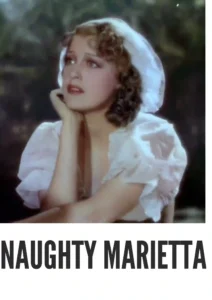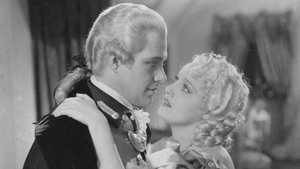Contact: info@alwanfilm.com
Video Sources 0 Views

Synopsis
Naughty Marietta 1935 Colorized Review: A Musical Delight from the Golden Age of Hollywood

Introduction
When we think of the Golden Age of Hollywood, we often recall the lavish musicals that defined the era, and Naughty Marietta (1935) is a shining example of this genre. Directed by the legendary W.S. Van Dyke, this film features a blend of romance, comedy, and musical numbers that captures the spirit of 18th-century Louisiana. Adapted from the operetta by Victor Herbert, Naughty Marietta showcases the enchanting talents of Jeanette MacDonald and Nelson Eddy, two of the era’s most beloved stars. This review will explore the significance of Naughty Marietta (1935) as a musical film, delving into its plot, characters, and the colorful production that defines its charm. We will also examine the broader context of its release and its impact on the genre of musicals in cinema history.
Check The Full Colorized Movies List
Check Our Colorized Movies Trailer Channel
Understanding Naughty Marietta 1935: Director, Cast, and Genre
Director’s Vision
W.S. Van Dyke, known for his efficient filmmaking style and knack for bringing stories to life, directed Naughty Marietta (1935). His vision was to create a film that not only entertained but also resonated with audiences through its music and romance. Van Dyke’s ability to blend operetta elements with Hollywood flair is evident throughout the film, allowing the musical numbers to shine while advancing the story.
The Iconic Performance of Actors
The film features the dynamic duo of Jeanette MacDonald and Nelson Eddy, whose on-screen chemistry has become legendary. MacDonald, portraying the titular character Marietta, delivers a performance filled with charm and vivacity. Her stunning soprano voice brings the musical numbers to life, captivating audiences with songs like “Ah! Sweet Mystery of Life.” Eddy, playing the role of the dashing Captain Richard Warrington, complements MacDonald’s performance with his own rich baritone voice and charismatic presence.
Supporting actors, including Frank Morgan as the comedic villain, add depth and humor to the film. Their performances contribute to the overall lighthearted tone of Naughty Marietta, making it a delightful viewing experience.
Exploring the Genre
Naughty Marietta (1935) falls squarely into the musical genre, a category that gained immense popularity during the 1930s. Musicals of this era often featured elaborate song-and-dance sequences, captivating choreography, and romantic plots. Naughty Marietta exemplifies these elements, incorporating operatic music into its narrative while showcasing the lush production values characteristic of Hollywood musicals. The film’s blend of romance, comedy, and music makes it a quintessential representation of its genre.
Exploring the World of Naughty Marietta 1935 Colorized: Plot and Characters
Detailed Synopsis
Naughty Marietta (1935) tells the story of a spirited young woman who escapes the constraints of her aristocratic upbringing. Marietta (MacDonald) is a runaway who finds herself in New Orleans, where she becomes embroiled in a series of comedic misadventures. When she crosses paths with Captain Richard Warrington (Eddy), a charming military officer, sparks fly.
The plot thickens as Marietta becomes the target of a villainous governor who seeks to capture her for his own nefarious purposes. Amidst the backdrop of vibrant Louisiana and the impending threat of capture, Marietta and Captain Warrington embark on a romantic adventure filled with witty banter, musical numbers, and unexpected twists.
Key moments in the film include delightful musical interludes, romantic encounters, and comedic situations that showcase Marietta’s spirited nature. The chemistry between MacDonald and Eddy elevates the film, making their love story both engaging and heartfelt.
Memorable Supporting Characters
The supporting cast of Naughty Marietta plays a crucial role in shaping the film’s comedic and romantic elements. Frank Morgan shines as the bumbling but lovable governor, whose antics provide much of the film’s humor. His character serves as both an antagonist and a source of comic relief, creating a delightful contrast to the romantic tension between Marietta and Captain Warrington.
Other supporting characters, such as Marietta’s friends and various townspeople, contribute to the film’s lively atmosphere. Each character adds depth to the story, enhancing the overall experience of the film.
The Art of Musical Film
Understanding the Musical Format
Musical films are characterized by their integration of songs and dance sequences into the narrative. These films often feature elaborate choreographies and memorable melodies that enhance the storytelling. Naughty Marietta (1935) exemplifies the musical format, utilizing Victor Herbert’s operetta as a foundation for its songs and performances.
The musical numbers in Naughty Marietta serve not only as entertainment but also as a means of character development. Through song, Marietta expresses her emotions and desires, allowing the audience to connect with her journey on a deeper level.
Development Over Time
The evolution of the musical film has been influenced by various cultural and technological changes in the entertainment industry. From early silent films featuring musical accompaniment to the introduction of synchronized sound in the late 1920s, musicals have continued to evolve. The 1930s marked a high point for the genre, with studios producing lavish productions filled with star power.
Naughty Marietta (1935) emerged during this golden age of musicals, showcasing the artistry and spectacle that defined the era. The film’s success contributed to the popularity of the musical genre, paving the way for future classics.
Naughty Marietta 1935 Colorized and Its Impact on Musical Cinema
The Decision to Adapt Victor Herbert’s Operetta
The decision to adapt Victor Herbert’s operetta into a feature film was a significant move for MGM Studios. By bringing Naughty Marietta to the big screen, the studio aimed to capitalize on the popularity of musicals while introducing a new generation to Herbert’s timeless music. The adaptation allowed for creative reinterpretation, incorporating Hollywood flair while remaining faithful to the original operetta.
Impact on the Musical Narrative
The film’s colorful production and memorable musical numbers had a lasting impact on the musical genre. The vibrant visuals and enchanting performances created a cinematic experience that resonated with audiences. The film’s success demonstrated the enduring appeal of musicals and solidified Jeanette MacDonald and Nelson Eddy as major stars of the era.
The Debate Over Musical Adaptations
Controversy Surrounding Adaptations
The adaptation of stage productions and operettas into film has often sparked debate among critics and audiences. While some argue that adaptations can bring new life to beloved works, others contend that they can dilute the original material’s essence. In the case of Naughty Marietta, the film strikes a balance between honoring Herbert’s operetta and embracing the cinematic elements that define Hollywood musicals.
Critics of adaptations may point out instances where the film diverges from the source material or sacrifices depth for spectacle. However, Naughty Marietta has generally been well-received for its ability to capture the spirit of the operetta while enhancing it with cinematic flair.
Examining Naughty Marietta 1935 Colorized as a Musical Film
Enhancement Through Music and Dance
Naughty Marietta (1935) stands as a testament to the power of music and dance in film. The musical numbers are not mere interludes; they are integral to the storytelling, allowing characters to express their emotions and drive the plot forward. Songs like “I’m Falling in Love with Someone” and “Ah! Sweet Mystery of Life” resonate with audiences, capturing the romantic spirit of the film.
The choreography complements the music, adding an additional layer of entertainment. The dance sequences are lively and engaging, drawing viewers into the world of the film. This seamless integration of music, dance, and narrative elevates Naughty Marietta within the musical genre.
Influence and Legacy: Naughty Marietta 1935 Colorized’s Impact on Musical Cinema
The Musical Trend Sparked by Naughty Marietta
Naughty Marietta (1935) contributed to the resurgence of the musical genre in Hollywood during the mid-20th century. Its success paved the way for subsequent musicals, inspiring filmmakers to create lavish productions filled with memorable songs and captivating performances. The film’s enchanting combination of romance and music helped solidify the popularity of musicals, influencing a generation of filmmakers.
The film’s impact is evident in later musicals that followed similar formulas, featuring star-studded casts, vibrant visuals, and catchy songs. Naughty Marietta remains a key reference point in the evolution of the musical genre, influencing films like Show Boat (1951) and The King and I (1956).
Director’s Cinematic Legacy: Beyond Naughty Marietta 1935 Colorized
W.S. Van Dyke’s Influence
W.S. Van Dyke, known for his adeptness in various genres, directed numerous films during his career, leaving a lasting mark on Hollywood. His contributions to the musical genre are particularly notable, as he helped define the style and tone of musicals during the 1930s.
Van Dyke’s ability to blend humor, romance, and music in Naughty Marietta (1935) showcases his talent for crafting entertaining narratives. His influence extended beyond this film, as he directed other successful projects, including The Thin Man series and The Great Ziegfeld (1936).
Themes Explored in Naughty Marietta 1935 Colorized
Themes of Love, Freedom, and Identity
Naughty Marietta (1935) explores themes of love, freedom, and identity within the context of its musical narrative. Marietta’s journey represents a quest for independence as she navigates societal expectations and her desire for genuine love. The film portrays her struggles against the constraints of her aristocratic background, emphasizing the importance of following one’s heart.
The romantic relationship between Marietta and Captain Warrington serves as the film’s emotional core, showcasing the transformative power of love. Their interactions are filled with wit and charm, highlighting the complexities of romance in a lighthearted manner.
Reception and Controversy Surrounding Naughty Marietta 1935 Colorized
Initial Reviews and Audience Reactions
Upon its release, Naughty Marietta (1935) received positive reviews from critics and audiences alike. The film’s engaging musical numbers, charming performances, and delightful storyline resonated with viewers, leading to its success at the box office. Critics praised MacDonald and Eddy’s performances, noting their chemistry and vocal talents.
While the film enjoyed commercial success, the adaptation from operetta to film did spark some discussions among purists. However, most audiences embraced the film’s charming and entertaining qualities, allowing it to stand the test of time.
Where to Watch Naughty Marietta 1935 Colorized Online
For those interested in revisiting or discovering Naughty Marietta (1935), the film is available on various streaming platforms. Services like Amazon Prime Video and Turner Classic Movies offer access to the film, allowing audiences to experience the charm of this classic musical. DVD and Blu-ray versions are also available for collectors and fans of the genre.
FAQs About Naughty Marietta 1935 Colorized
Q: What is the significance of Naughty Marietta (1935) in musical cinema?
A: Naughty Marietta (1935) is significant for its successful adaptation of Victor Herbert’s operetta into a cinematic musical, showcasing the talents of Jeanette MacDonald and Nelson Eddy. Its success helped popularize musicals during the Golden Age of Hollywood.
Q: Who directed Naughty Marietta (1935)?
A: The film was directed by W.S. Van Dyke, known for his work in various genres and his ability to blend humor, romance, and music.
Q: What themes are explored in Naughty Marietta (1935)?
A: The film explores themes of love, freedom, and identity as Marietta navigates her desires for independence and genuine love while escaping societal expectations.
Q: How has Naughty Marietta (1935) influenced the musical genre?
A: The film’s success contributed to the resurgence of the musical genre, inspiring subsequent films to incorporate lavish production values, memorable songs, and star performances.
Conclusion
Naughty Marietta (1935) stands as a quintessential musical of the Golden Age of Hollywood, showcasing the talents of Jeanette MacDonald and Nelson Eddy. W.S. Van Dyke’s direction, combined with vibrant musical numbers and charming performances, creates a delightful cinematic experience. The film’s exploration of love, freedom, and identity resonates with audiences, making it a timeless classic. As we celebrate the legacy of Naughty Marietta, it is essential to appreciate its role in shaping the musical genre and its enduring impact on cinema history. Whether revisiting the film or experiencing it for the first time, Naughty Marietta promises a charming journey filled with romance and music that continues to captivate audiences today.


















